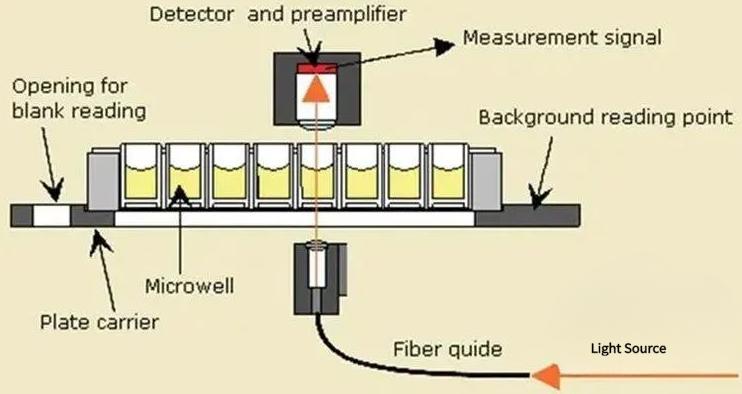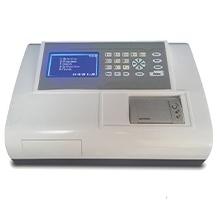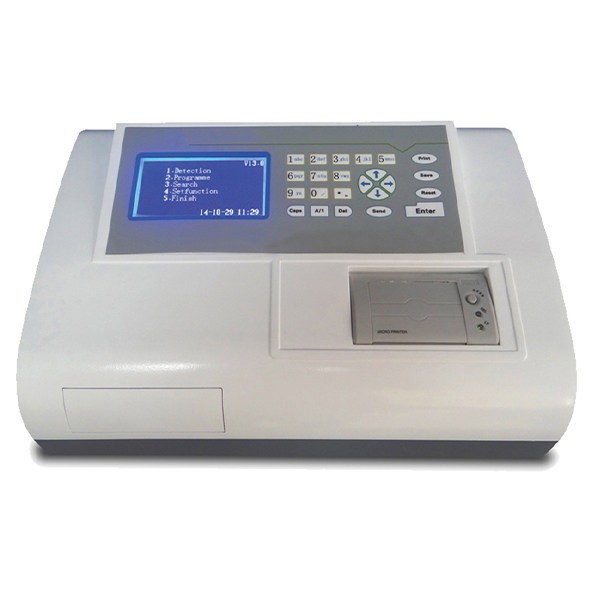The microplate reader is the core equipment in the enzyme immunoassay workstation. The emergence of enzyme immunoassay technology mainly solves the problem of automatic and rapid testing of a small number of samples. The microplate reader can apply a variety of principles, can measure large and small molecules, and can also cooperate with imaging to carry out various cell experiments. This article will introduce the development and classification of the microplate reader.
The Development of the Microplate Reader
At the beginning of the appearance of the microplate reader, it was a special detection instrument for enzyme-linked immunosorbent assay (ELISA). Up to now, all experiments related to optical signals, experiments that require high throughput, need to save reagents, and liquid substances that can be transferred to microplates can all be considered using microplate detectors (microplate readers) to do signal detection. Therefore, people continue to use the common name of “ELISA Plate Reader” in the early days, but now it has broken through the scope of ELISA, and the more commonly used name is “Microplate Reader”.
The essence of the early microplate reader(the absorbance microplate reader) is a spectrophotometer, which uses colorimetry to detect the absorbance (Abs) of a small volume of liquid in a 96-well microplate. During the detection, the light wave emitted by the light source lamp becomes a beam of monochromatic light through a filter or a monochromator and enters the sample to be tested in the plastic microporous plate. Part of the light is absorbed by the sample, and the other part passes through the sample and irradiates the photoelectric on the detector. The photoelectric detector converts the light signals of different strengths of different samples to be tested into corresponding electrical signals, and then sends them to the microprocessor for data processing and calculation. Finally, the result has been displayed the result by the monitor and printer.

Classification of Microplate Reader
1. According to different filtering (monochrome) methods, it can be divided into filter microplate reader and grating microplate reader.
The filter-type microplate reader has a built-in filter, which can be selected according to the needs of the experiment to obtain different wavelengths. After passing through the filter, most of the full-spectrum light emitted by the light source is filtered, leaving only the wavelengths allowed by the filter itself to pass through.
Although the grating microplate reader has only appeared in recent years, it has developed rapidly and soon became the mainstream product of the microplate reader. Its working principle is: the full-spectrum light emitted by the light source is split through a series of slits distributed on the grating to obtain light of any wavelength. The wavelength is continuously adjustable, and the general increment is 1nm. The grating microplate reader is convenient and flexible to use. The wavelength of light can be selected through software operation, and the absorption peak of unknown samples can be obtained through full-wavelength scanning to achieve the purpose of non-target screening.
2. According to functional classification, microplate readers can be divided into single-function and multi-function microplate readers. Single-function microplate readers mainly include light absorption microplate readers, fluorescent microplate readers, chemiluminescence microplate readers, etc.
The light absorbance microplate reader is the detection of visible or ultraviolet absorbance, that is, the detection of the optical density absorbed by the sample. Optical absorption detection technology is mature, low in cost, and easy to operate, but has a narrow dynamic range and low sensitivity. Generally visible light or ultraviolet light uses a tungsten lamp and a deuterium lamp as the light source, and the ultraviolet/visible microplate reader can switch between the two light sources.
A fluorescent microplate reader is used to detect the fluorescence intensity. After passing through the excitation grating, the light of a specific wavelength is irradiated on the sample marked by the fluorescent substance and then reaches the detector after passing through the emission grating. Fluorescent microplate readers can detect many types of fluorescence. The fluorescence detection sensitivity is high, and the detection signal is relatively stable.

The chemiluminescence microplate reader uses a single-photon chemiluminescence detector (PMT) to count, and the number of photons is proportional to the concentration of the target analyte in the sample. Chemiluminescent microplate readers are very sensitive and have a wide dynamic range.
A multi-functional microplate reader is an integration of the above two or more detection modules. Usually, it can provide at least the two most common detection functions of light absorption and fluorescence. Some mid-to-high-end multi-functional microplate readers can also support chemiluminescence, Time-resolved fluorescence, fluorescence polarization, bioluminescence resonance energy transfer, and even detection such as “Western Blot” and “upconversion luminescence” can be supported. The multifunctional microplate reader has powerful functions, a wide range of applications, and avoids repeated purchases, so it has become the first choice for laboratories. To know more about microplate reader, please click here.

